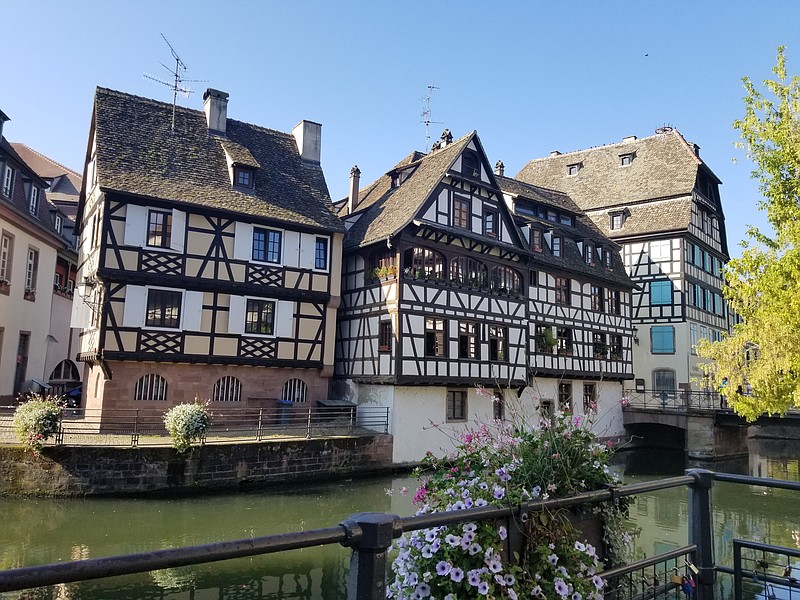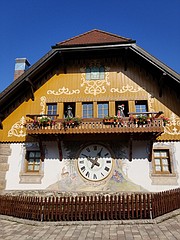In September, my wife and I took our fifth European river cruise from Basel, Switzerland, to Amsterdam, Holland. It was our favorite for several reasons. First, there are more cities, castles and historical sites along the Rhine than any other river. Second, it was the first time we traveled with friends, and as the old expression goes, "A joy shared is twice the delight." Finally, we were aboard a Viking ship, and they offer a fantastic cruise.
A good river cruise begins with proper planning. Normally, formal attire isn't required. Viking requests business casual for evening meals. Otherwise, jeans, shorts and comfortable but sturdy shoes are the norm. Always pack a good rain jacket with a hood. Aside from that, try to avoid overpacking as there is limited room (about 270 square feet per cabin) for extra luggage and unneeded clothing.
Also, do some homework. Familiarize yourself with the itinerary and know beforehand what to expect. Most river cruises include a two- to three-hour guided walking or bus trip each day (there are options for less-mobile travelers). Afterward, there will be time to explore on your own or take an optional excursion.
For example, on the second day of our cruise, we docked at Breisach, Germany, a quaint old German city near the Swiss border. To the east is the beautiful and rugged Black Forest, and to the west is the Alsace region of France. We took an included three-hour morning coach tour deep into the steep valleys and mountains of the Black Forest, the home of cuckoo clocks, beautiful wine vineyards, glass-blowing artists and timeless fairy tales.
That afternoon we explored Breisach on our own while friends took an optional e-bike tour (a small electric motor complements the pedals) along one of the most beautiful rural roads in all of Germany.
Another group took an optional tour to the village of Colmar, Germany, where American forces fought a bitter infantry and armor campaign against the Germans during the winter of 1944-45. They visited a museum containing many artifacts from the conflict as well as several memorials to both American and French soldiers. One famous memorial is to Audie Murphy, the most-decorated soldier in the war who won the Medal of Honor fighting in and around Colmar, then returned home a hero and became a movie star.
Dinners aboard riverboats are a festive time. Although we traveled with friends, we enjoyed meeting other guests. We quickly discovered couples with similar interests in history, cuisine, wine, religion, politics, children and (at our age) grandchildren. Getting to know one's fellow travelers is a delightful facet of river cruises. Great food served with great wine in a beautiful setting lends itself to meeting new friends.
Continuing north, the Rhine becomes both wider and busier. It is the primary commercial transportation artery in all of Europe. The third afternoon, we arrived in Strasbourg, the largest city in Alsace. This rich agricultural and manufacturing region has been a part of both Germany and France at different times. Since World War II, it has been a French city, but it is a European melting pot and appropriately hosts the governing authority of the European Union. The many councils and ministries that convene there are something to behold, and the buildings that house them are architectural masterpieces.
The Strasbourg Cathedral is the focal point of the city and is built on the original spot of a Roman temple dating from 12 B.C. The present magnificent cathedral was built from 1176 to 1439. At 466 feet high, it was the tallest building in the world until 1874. Even today, the city maintains its charm by restricting all new construction to less than the height of the cathedral. With its ancient half-timbered houses lining cobblestone streets, beautiful architecture, rich history and mouthwatering Alsatian pastry, cheese, wine and sausages, Strasbourg is a delightful city to explore.
Further north, we discovered Heidelberg, a smaller but historically well-preserved city along the Middle Rhine. Heidelberg is the home of the majestic Heidelberg Castle built in the early 1200s and the first German university built in the 1300s. Many of the antiquities in Heidelberg avoided the destruction of World War II, so some of the best-preserved architecture and artifacts from Medieval Germany are located here.
The best part of the Middle Rhine was cruising between steep, perfectly manicured vineyards from the river to the sky. Additionally, Middle Age castles appear with every turn. Most were built by ruling families to protect their fiefdoms and to ensure they were strategically positioned to collect tolls from vessels traversing the river. There were few roads, so the river was the major route of travel. We imagined we could see trolls, ogres, dragons, damsels in distress or brave knights along the shore.
Most of the castles were pillaged and burned when King Louis XIV of France ruthlessly attacked Germans along the Rhine in the 1600s; however, many have since been restored and are a source of pride to all Germans. Some are exquisite private homes, and many are hotels and resorts. My favorite was a tiny castle on an island just south of Koblenz called Mauseturm, or Mouse Tower.
According to legend from A.D. 974, a cruel ruler in the region, Archbishop Hatto II, raised the price of grain so high during a famine that the starving peasants couldn't afford it. The peasants rebelled, but the wily archbishop lured many of them into a barn with the promise of free food. When they were all inside, he ordered the doors locked and the barn burned. The peasants screamed in terror, and he sarcastically remarked that they squealed like mice. That night in his island tower, thousands of mice invaded and devoured him. Is it true? You decide.
Next was Cologne, another cathedral city dating from the Roman Empire. In 1709, an Italian perfume merchant named Johann Farina concocted a wonderful fragrance known as "eau de Cologne," the water of Cologne. There is a lot more than perfume here however, as we quickly discovered. Like Strasbourg, the cathedral is a treasure. Its twin spires can be seen for miles around. Cologne was damaged heavily during World War II, but the cathedral survived enough to be rebuilt on the ruins after the war. Thankfully, the beautiful and priceless stained-glass windows were removed before the bombing and stored underground in the countryside.
The final day and night we spent in Holland, much of which was built below sea level on land reclaimed from the North Sea. Originally, most of the famous windmills powered pumps that moved water from one canal to another to prevent flooding during high tide, but they also worked lumber and grist mills.
We toured a working windmill in Kinderdijk, and its 400-year-old mechanism inside still whirs quietly as the large blades turn effortlessly outside in the constant breeze. The simple process of nature and technology working together seemed comfortable and proper.
Our last night on the ship was bittersweet. We exchanged contact information with our new friends, shared a wonderful meal and drank a toast to our incredible experiences. With raised glasses, we echoed the German toast, "Prosit," to your health. That's how to wine and dine on the Rhine.
Roger Smith, a local author, is a frequent contributor to the Times Free Press. Email him at capt.737@hotmail.com.

